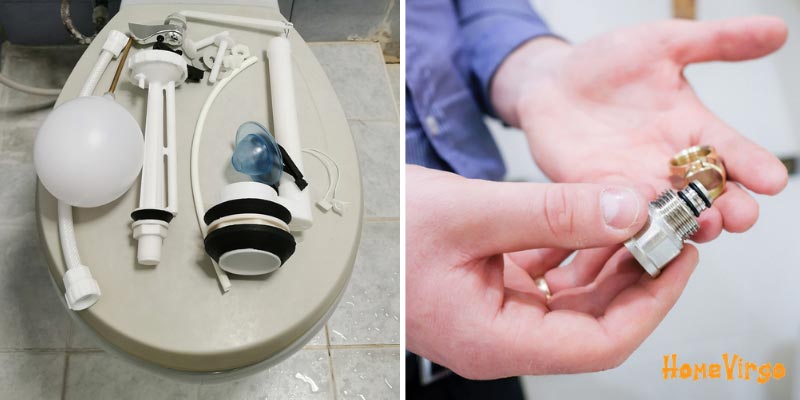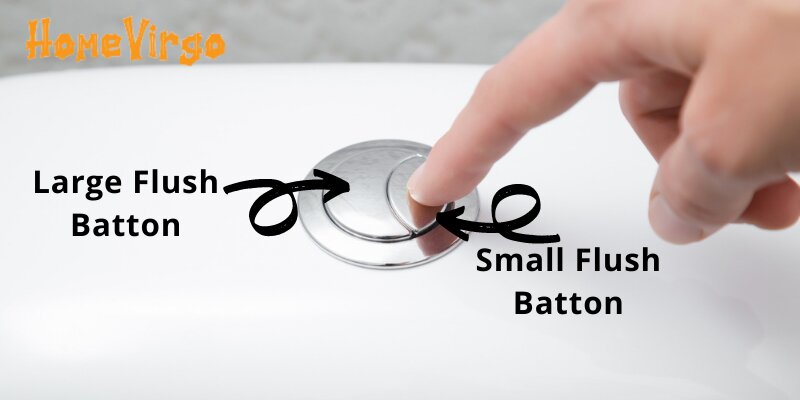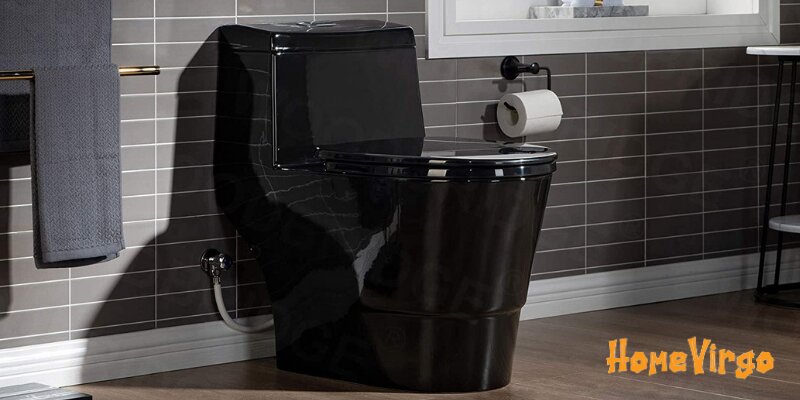Push Button Toilet Problems

Push Button Toilet Problems
Push-button toilets are a recent invention that has taken over in the toilet industry. They are up and coming as one of the best toilet flush systems of today.
The need for water conservation in the world has increased hugely over the past few years and it will take every ounce of engineering to figure out new ways to stop the numerous amount of water that gets wasted every day.
Most sewerage pipes lead back to a water treatment plant that can now, with modern technology, recycle that water and turn it into clean drinkable water again.
There are still many countries and regions that do not have such luxuries of water treatment plants and so the water that is used might never be used again, it’s lost.
The invention of the push button toilet is an attempt to undercut this massive dilemma and conserve water where ever possible, in this case, toilets.
It always pays to save valuable resources, no matter the cost. Water is one of those resources and to some people who barely see enough of it to survive, this crisis means life or death.
A few new projects are developing quickly around the world that operates with all the water you save. If you save water then someone else who needs it gets that saved water.
So for every 5 liters that a person saves in the US, under one of these projects, 1 liter is gathered to send to poor regions to relieve the water crisis.
What is a Push Button Toilet?
It is probably quite self-explanatory, but for a more detailed approach let me explain. As mentioned above, the strategy of these toilet systems is to save water.
So the more conventional toilet uses a handle to trigger the flushing mechanism which allows the water in the cistern to flow out of the tank and into the bowl.
This regular type of toilet uses a full tank of water for every flush, even if it is just liquid waste that is being flushed.

A push-button toilet uses a combination of two different buttons that allow the tank to be partially or fully flushed.
There is a small button that is used to trigger the half flush and the bigger button which activates both flush mechanisms allowing for a full flush.
The buttons are attached to valves via spring-assisted mechanisms, each button is connected to a different valve which provides the two different flushing options.
These valves are regulated to set volumes depending on which trigger is activated. For the half flush, it is normally 3 liters and for a full flush, it is set to 6 liters. A standard toilet uses around 7 liters per flush and has no half flush capability.
What Problems do Push Button Toilets Have?
These toilets have excellent flushing ability and water conservation, but there are still problems that can develop, and so it is important to know what they are so that you might be able to prevent them or fix them if they have already happened.
Running Water
A toilet that is designed to save water can, unfortunately, develop a water wastage problem, which is slightly ironic.
The valves on these toilets are different from those that are found in standard toilets, with a flapper that is designed differently.
The problem to look out for is water that is continuously running into the bowl. You will probably notice it because the inlet tap never switches off after filling up the tank.
If you experience this problem it means that you either have a faulty valve or a flapper is not sealing the outlet pipe properly.

It is a complaint that we have seen a couple of times where the valves that are sent from the factory were not the correct size for the connecting pipes, which means that there is going to be leakage.
The valves can be the right size and still be faulty which is simply a manufacturing defect. The only thing to do in that case is to send them back and ask them to send replacements.
You might want to check the flappers first to see that they are not the problem because sometimes dirt might get caught in it preventing it from closing properly, this can happen if the water supply to your house is dirty or otherwise a rubber seal on the flapper is worn down and is failing to seal the pipe off.
In this case, the valves are not the problem, but instead, you should replace the flapper or buy a rubber seal and replace that.
Push Buttons Not Working
The great thing about having buttons for flushing mechanisms is that they are less likely to break as easily as a chain and handle system.
However, there are times that the buttons might become old and can stop working. This is usually because the springs have rusted and gotten damaged.
The buttons work off the springs that give the resistance of the button when pushed on. The springs return the button to the original place after they have been depressed, and if they stop functioning then the buttons will stay stuck in the depressed position meaning that you won’t be able to push them again to flush.

The buttons are designed with relatively high durability and strength but if this does happen then unfortunately the only thing to do is to replace the entire toilet – just joking, it’s not that serious.
You will have to replace the button fixture which is quite simple and can be done by anyone. Replacement parts can be found at most general plumbing stores.
You might be able to remove the broken button fixture and try to mess around with it yourself to try to get it working again, but just keep in mind that if it breaks once it will break again later.
Clogging and Blockages
If you once had a regular toilet and then recently had it replaced for a push button or otherwise known as a dual flush toilet, then you might have experienced more resistance in the drainage system or even had a couple of blockages.
The reason for this is because the drainage pipes in older houses are normally quite small. This is done to save on costs as well as space, especially if it is a multiple-level building where several pipes are running through the floor and walls of the building.
Push-button toilets have less water pressure in a half flush which means that if someone accidentally flushes solid waste using a half flush, the waste won’t travel very far down the small drains.
The other thing with push-button toilets is the wider trap at the bottom of the bowl. This a good thing in that it allows more waste to be pushed out of the bowl without much problem.
But then when it enters the drainage pipes it might get stuck, and with a lack of pressure to push it further, an eventual clogging situation might develop.
The way to avoid this is to either replace the old smaller drains for bigger more modern versions if you can afford to, or if the structure of the building will allow for it, otherwise, utilize double flushes where solid waste is concerned.
You could also, from time to time, flush the empty toilet a couple of times to remove possible waste that might have gotten caught up in the drains.
Price
This doesn’t necessarily fall under push-button toilet problems but it might be worth talking about. These versions of toilets are generally more expensive than regular toilets because of the more intricate and complex design for the dual flush mechanism.
However, the benefit of having this toilet is not only the water conservation but also the reduced water bill at the end of the month. If you use less water then you’ll save money on the water bills each month.
Depending on the household size, a push-button toilet could save up to 40% of the normal usage amount. So at the end of the day, despite the toilet being more costly to buy at first, you’ll probably save more money than you lost.
That sounds like a good deal to me. There are added costs as well when it comes to replacement parts and repairs, but if you maintain your toilet well then that shouldn’t amount to a great expense.
Fill Valve Not Switching Off
This is a trend that spreads across all types of toilets worldwide. The fill valve might stop switch on and off on its own, which causes a lot of water to be wasted.
The fill valve opens when the toilet is flushed and then turns off again when the tank is full. Sometimes, the toilet develops the problem of overflowing because the fill valve won’t turn off when full.
If this happens then you might notice that there is water running into the bowl constantly. If you open the tank you will see that water is still running into the tank while the excess water flows out through the overflow pipe.
If the cistern can hold 6 liters of water and the tank fills up in about 5 minutes, with the refill valve running constantly, you might find yourself wasting around 72 liters every hour that the problem is not fixed.
The best thing to do in the short term is to switch off the inlet tap at the base of the toilet and only refill the tank when needed. Otherwise, the refill valve will need to be replaced.
The refill valve might also allow no water at all to flow into the tank, in the case of this type of problem, a new refill valve might also be the best bet.
Maintenance
This point is more of a general statement for toilets and is a good practice that can never hurt you in the long run.
If you take out a little bit of time every day to clean the bowl then you might just be doing yourself the world of good.
Anything that is maintained little by little will always outperform something that gets worked on once in a while.
When cleaning this type of toilet it might be wise to open up the tank and clean inside there because a lot of dirt can accumulate after long periods blocking the valves.
If your water supply at home has high levels of limestone in it, then you’ll maybe start to see green algae-looking stuff form around the water level.
This can be easily fixed by flushing the toilet to get all the water out of the tank, and then turning off the inlet tap.
Boil the kettle and pour the hot water over the affected areas and it will loosen up all of the lime, which will allow you to then wipe it off with a brush or cloth.
Final Thoughts
Push-button toilet problems are not that much different from standard toilets and are certainly less than the more sophisticated ones like a pressure-assisted system.
The best toilet flush systems will all at some point or another give you some kind of hassle, whether it’s a leak or a flushing handle breaking.
The pros should outweigh the cons when it comes to a toilet search, if there are many good things about the toilet that will save you money and effort then that might be the route to take.
It’s important to remember that all toilets need to be maintained, even if you bought them for a thousand dollars.
A little effort goes a long way. Most of the time toilets only develop small problems here and there, and seldom develop the bigger more frustrating problems like the ones we discussed here.
So if you can fix it by yourself and you’re confident that you’ll do a great job then great, but if you’re not too sure or if the problem is a big one, then it’s probably best to call up a professional plumber to come to do the job for you.
Otherwise, for the most part, having a push-button toilet is plain sailing. It is easy to use and it is very reliable. If you’re ever worried about people not knowing how to use the buttons correctly.
Then it’s simple enough to put up a little sign saying, the small button for liquids and big button for solids, then you’ll be well on your way to a nicely reduced water bill at the end of the month, giving you those extra dollars to use elsewhere.
And if you’re up for it try to join a water-saving project near you. It would be much appreciated I’m sure.




